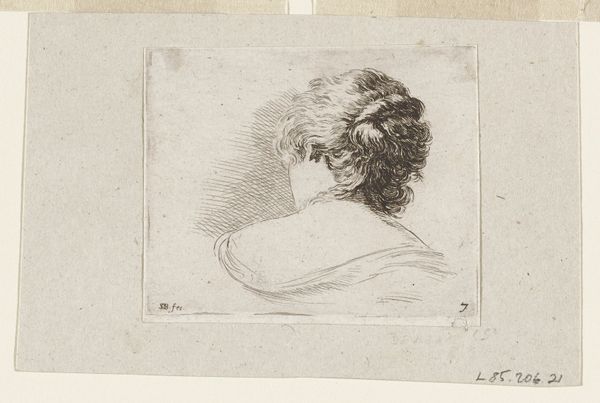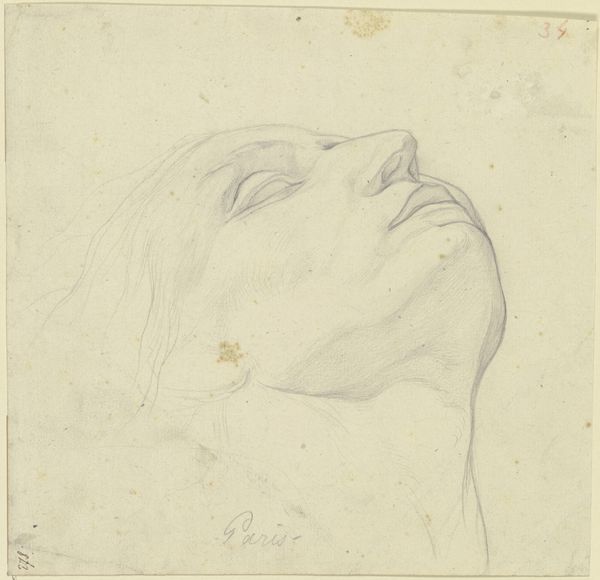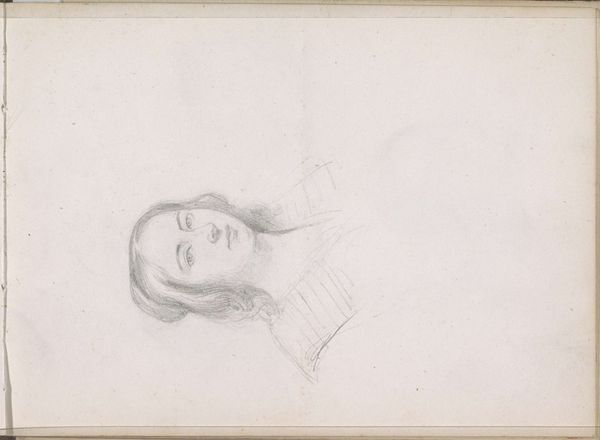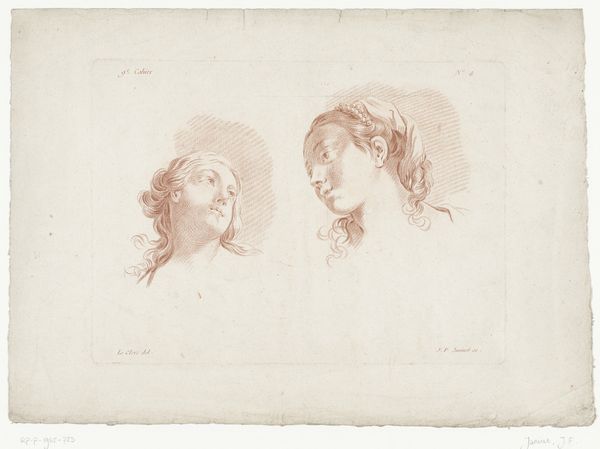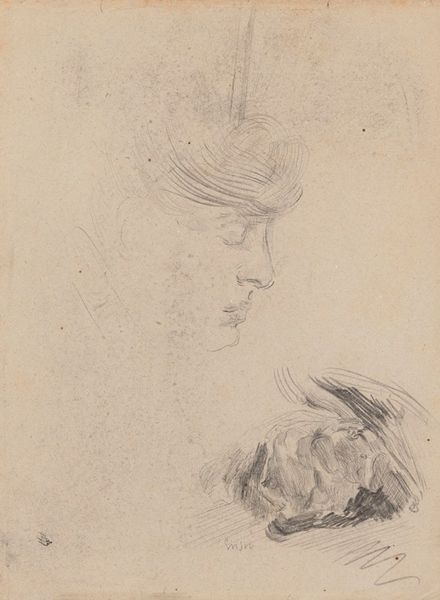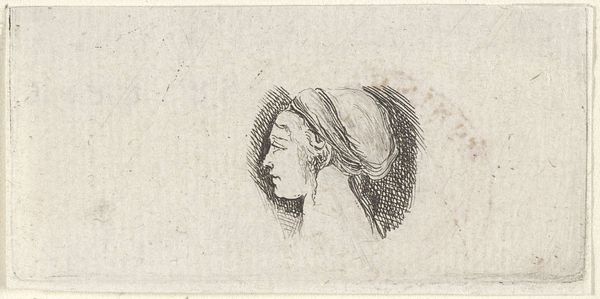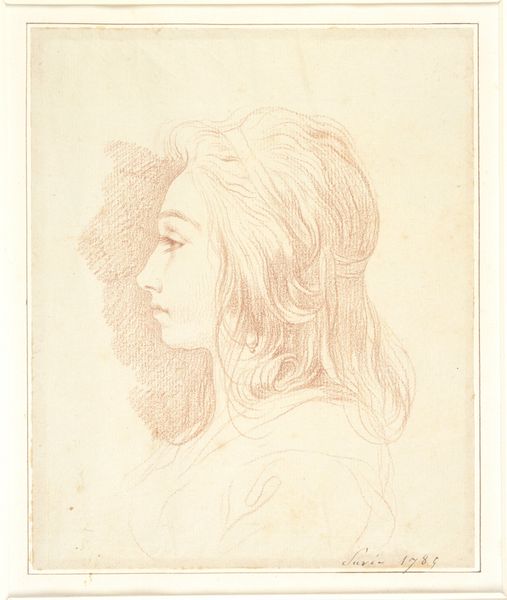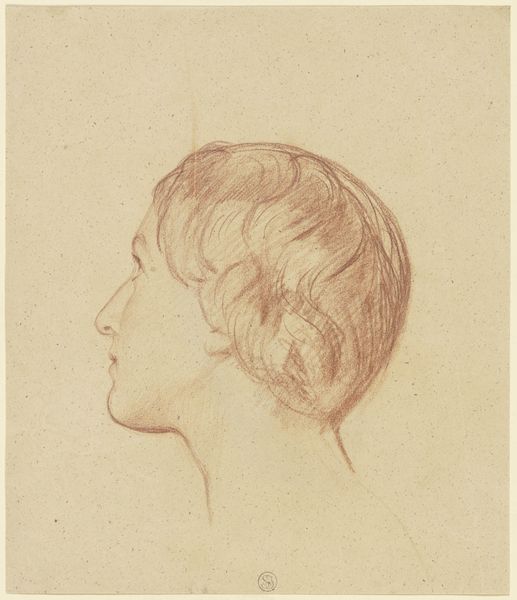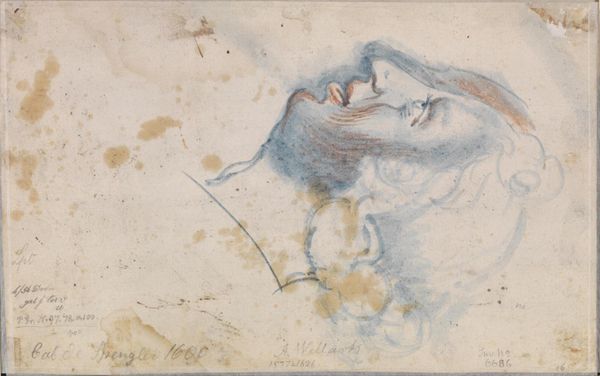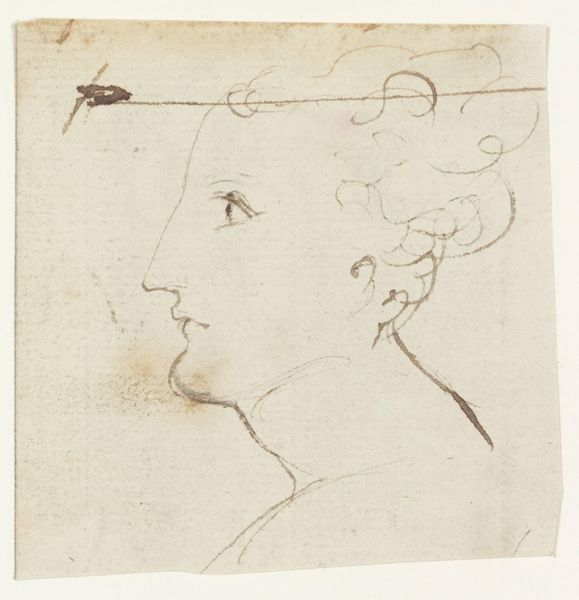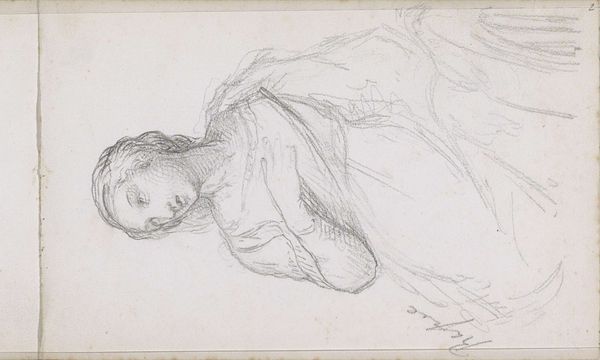
drawing, paper, ink
#
portrait
#
drawing
#
toned paper
#
light pencil work
#
quirky sketch
#
baroque
#
pen sketch
#
pencil sketch
#
old engraving style
#
paper
#
personal sketchbook
#
ink
#
pen-ink sketch
#
sketchbook drawing
#
sketchbook art
#
profile
Dimensions: height 44 mm, width 50 mm
Copyright: Rijks Museum: Open Domain
Curator: Welcome. Here, we see Stefano della Bella’s "Hoofd van een vrouw, rechts omhoog kijkend," created sometime between 1620 and 1664. It's a pen and ink drawing on paper currently held at the Rijksmuseum. Editor: Wow, she looks so serene! There's something incredibly peaceful, almost detached, about her gaze turned upwards. I imagine her lost in a daydream, maybe watching clouds float by. Curator: Indeed. The upward gaze, a common motif in Baroque portraiture, invites reflection. We should also consider the politics of looking here. Who had the power to be portrayed this way, and what social roles did these women occupy? We might ask, what stories aren't being told in the countless portraits with a similar composition? Editor: That’s such a great point. When you look closer, the lines are so delicate, but sure. It feels more like a spontaneous thought captured, like catching someone unguarded. Like a backstage pass into this human being's moment of introspection. It is simple and spontaneous, but powerful too. Curator: This immediacy also plays into the period's shifting relationship between art and accessibility. As artistic patronage changed and broadened, portraits became crucial in shaping not just personal identity but also political messages and social standing. Her turned-up face might be read as an openness to a greater ideal but only insofar as the drawing might point to very material circumstances that allow the drawing to be, itself. Editor: Exactly. But isn't there also a universality to this posture, something timeless? Maybe we can all recognize it in those moments where we too feel lost or inspired. This simple sketch gets right into feelings about where to go in life. It isn't only a person who once lived; it’s every person searching. Curator: You've touched on something vital—the capacity for art to transcend historical context. Yet, anchoring it in the specifics of its time reminds us of art's inherent embeddedness in a particular world, one that shaped the possibilities of representation. Editor: I’m finding myself completely pulled in by this woman’s profile—I wonder what Stefano was thinking or feeling while drawing it. Perhaps his work has touched on some raw and essential moment of insight or transformation. Curator: An intriguing and deeply affective suggestion. The convergence of the personal and political within art invites continuous conversation and fresh perspectives. Editor: Beautiful, thank you.
Comments
No comments
Be the first to comment and join the conversation on the ultimate creative platform.
